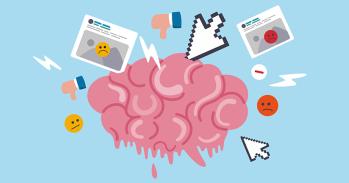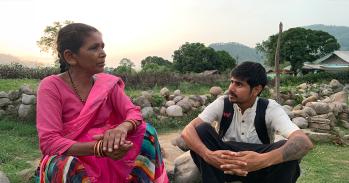
The internet needs an international World Trade Organization (WTO)-style body to protect and grow it as one of the world’s unique shared resources: a communications infrastructure that is open, free, safe and reliable, concludes a new report published today.
The internet needs an international World Trade Organization (WTO)-style body to protect and grow it as one of the world’s unique shared resources: a communications infrastructure that is open, free, safe and reliable, concludes a new report published today.
The world faces a series of complex issues involving data and communications which go beyond national or bilateral deals. They potentially threaten free and open trade, easy and reliable communication, data flows and connectivity
Peter Williamson
The findings, which have been published by the UK-China Global Issues Dialogue Centre at Jesus College Cambridge, draw on a conference attended by international experts including former Australian Prime Minister Kevin Rudd and representatives from Google, Facebook, Huawei, Alibaba, United Nations Conference on Trade and Development, the ITU, and OECD.
The global communications system – including the internet, smartphone access, and the Internet of Things – allows near-universal communication and supports almost every aspect of the modern economy. The report argues that just as the capabilities of communications infrastructures are being amplified by artificial intelligence (AI) and other technologies, we are becoming more aware of the risks of direct attacks and splintering, and the threat of distrust.
Professor Peter Williamson, Chair of the UK-China Global Issues Dialogue Centre, said: “The world faces a series of complex issues involving data and communications which go beyond national or bilateral deals. They potentially threaten free and open trade, easy and reliable communication, data flows and connectivity.”
Conference attendees widely agreed that the world would benefit from better orchestrating knowledge about communications infrastructures, providing a shared picture of issues, threats and opportunities, based on deep technical expertise. One of the most important recommendations in this report is that the first step in creating a WTO-equivalent for data flows would be to set up a Global Communications Observatory. The Observatory could play an important role in uncovering potential risks of new data and communications technologies, such as loss of privacy or opportunities for data tampering, and proposing solutions.
“We need a global institution comparable to those in climate change, finance, health, development or refugees. At the moment, there is no obvious place for multilateral negotiations over issues such as data privacy or cybersecurity,” added Professor Williamson.
“We propose using the Intergovernmental Panel on Climate Change (IPCC) as a model, as that has hugely influenced intergovernmental processes of negotiation and action around climate change.”
Creating the Global Communications Observatory would require support from the main telecommunications companies, mobile providers and platforms, sharing relevant data on network performance and patterns. It could in time become a condition of public licenses, and use of spectrum, that they share key data on the state of networks. It would be likely to need joint funding by the main nations involved in global communications, with contributions from the main businesses (operators, platforms and manufacturers), so that it could offer a living picture of the state and prospects of the infrastructures on which we all depend.
Designed to be as high profile and accountable as the IPCC, the Global Communications Observatory would draw on existing processes and use techniques pioneered by the IPCC for large-scale expert participation in analysis and assessments. It would deliver regular reports on key trends and emergent issues, and present accessible visualisations of the state of communications networks. In time, it could gain a formal status and a duty to report into the G20 and G7.

The text in this work is licensed under a Creative Commons Attribution 4.0 International License. Images, including our videos, are Copyright ©University of Cambridge and licensors/contributors as identified. All rights reserved. We make our image and video content available in a number of ways – as here, on our main website under its Terms and conditions, and on a range of channels including social media that permit your use and sharing of our content under their respective Terms.




